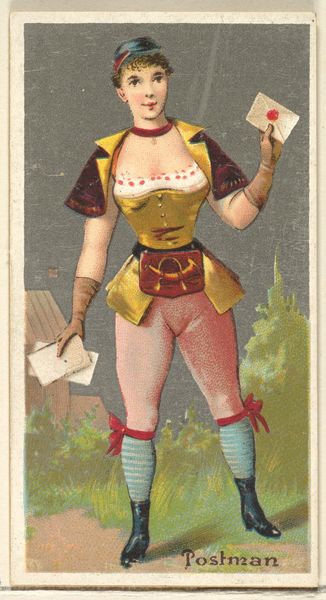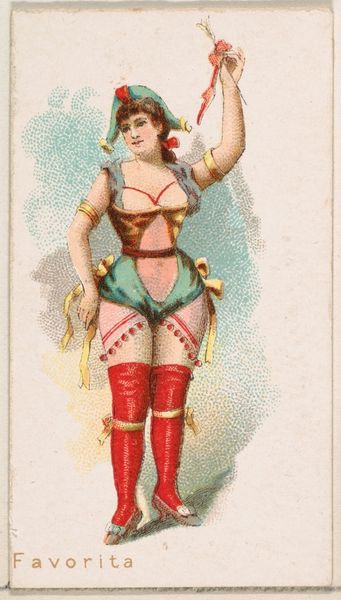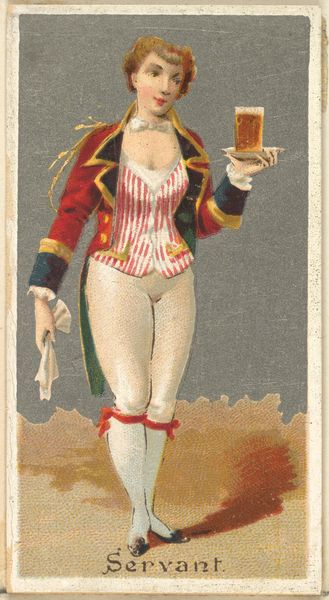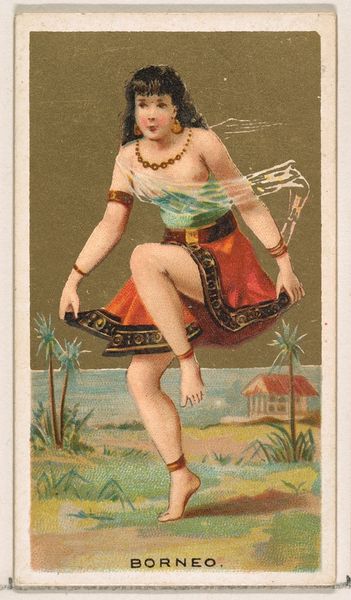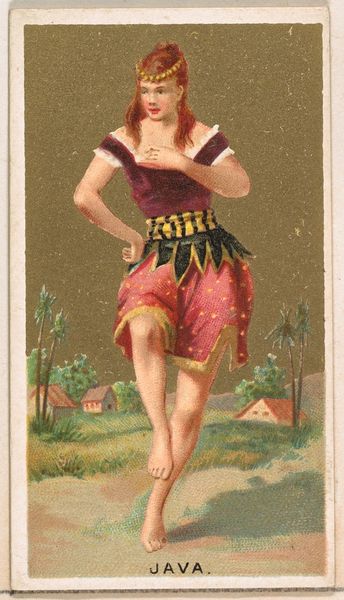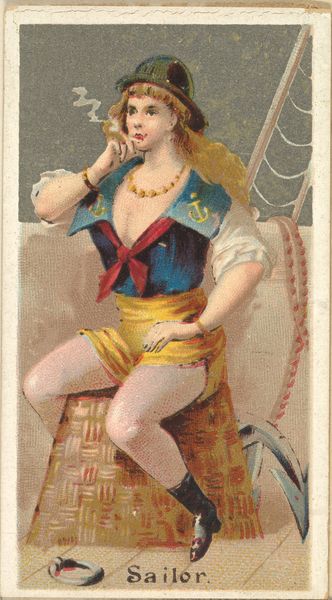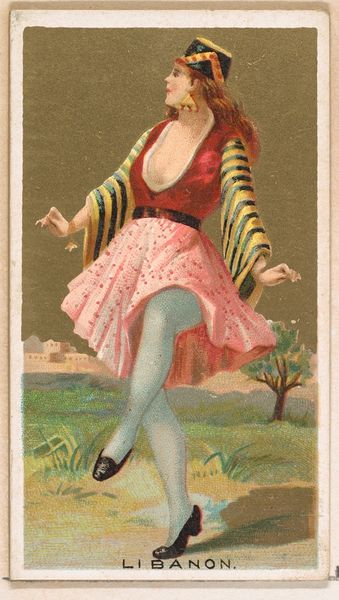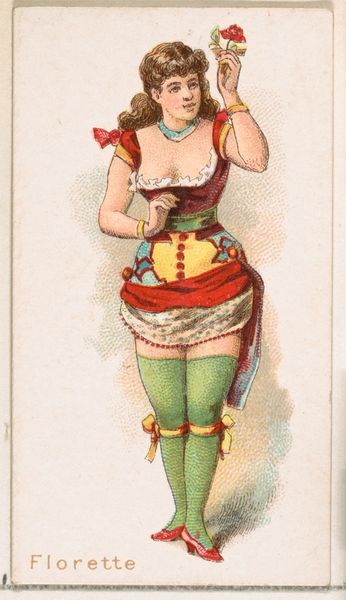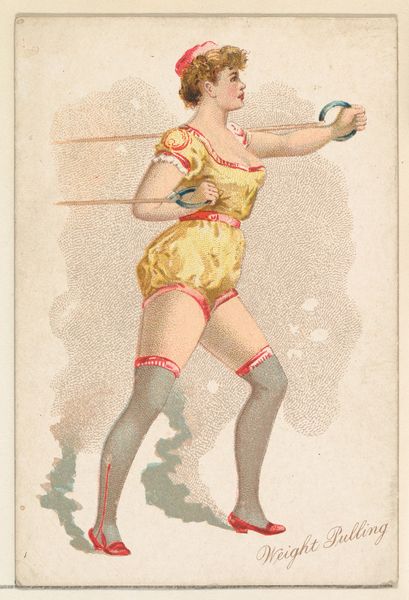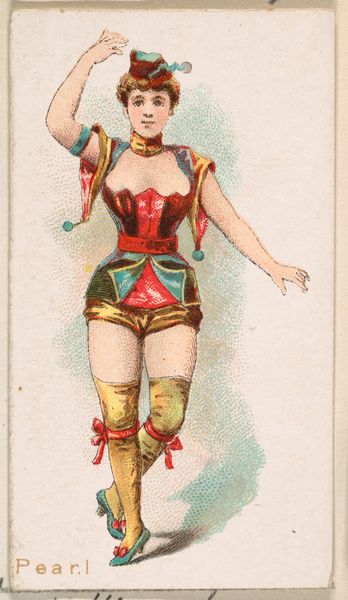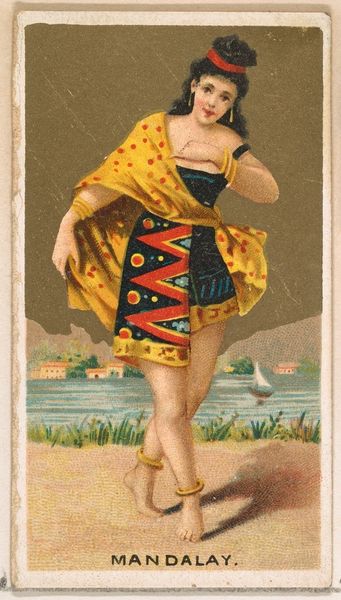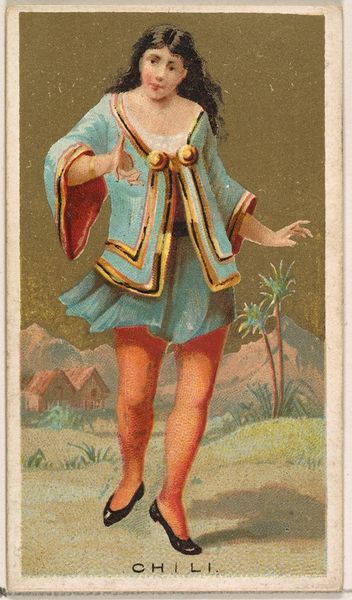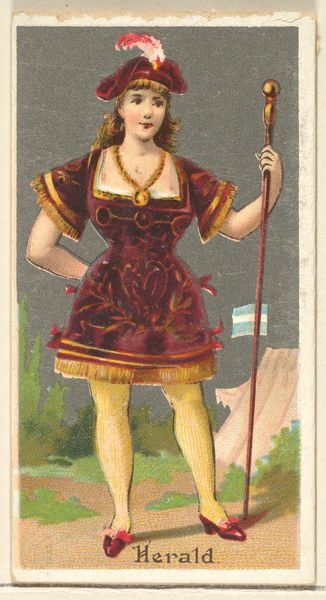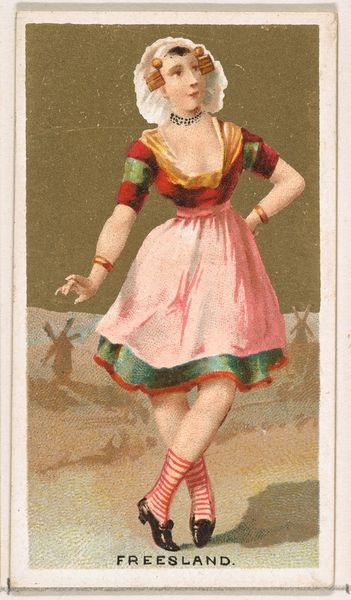
Athlete, from the Occupations for Women series (N166) for Old Judge and Dogs Head Cigarettes 1887
0:00
0:00
drawing, print
#
portrait
#
drawing
# print
#
figuration
#
athlete
#
portrait art
Dimensions: sheet: 2 11/16 x 1 1/2 in. (6.9 x 3.8 cm)
Copyright: Public Domain
Curator: Let's take a look at "Athlete," a print from the Occupations for Women series made around 1887 by Goodwin & Company. Part of a series used to promote Old Judge and Dogs Head Cigarettes, it resides here at the Metropolitan Museum of Art. Editor: The first thing that strikes me is how contradictory it seems. An athlete presented with this sort of theatrical and almost ludicrous construction – that's quite a loaded image! Curator: Exactly! It speaks volumes about the perceived roles of women in that era, doesn't it? It hints at the commodification of female athleticism, or, rather, a twisted public imagining of it. It places sportswomen into a carefully constructed narrative meant for male consumption. The visual is a statement about the emerging ideals of working women packaged neatly into the sphere of advertising. Editor: Yes, the whole presentation feels off-kilter when thinking about labor, fitness, and production, especially that peculiar little weight in her hand! What even *is* that thing? It certainly isn’t standard equipment of the time. The piece's materials—paper, ink—served a fleeting, commercial purpose. We are so used to our art lasting, while here it has been purposed for consumption. Curator: And to whom, really? Was this advertisement aiming for other female athletes or simply a general public? The series titles imply professions considered unusual for women, adding an undercurrent of progress and opportunity to lure smokers. Editor: This does make you question where, really, her labour lay. The print almost looks like a portrait and so this all speaks to representation. A visual spectacle designed for consumption over some kind of productive output. And is the artist himself wrestling with the very concept of this new ideal woman through these cigar cards? Curator: Indeed. And seeing as these were meant for mass consumption in a male-dominated industry, how did this portrait impact societal perceptions and further perpetuate such manufactured imagery? Editor: So while on the surface we are observing something as seemingly benign as an image printed for distribution with a product, there are really so many hidden details speaking to class, production, labor and social trends here. Curator: Precisely! Its charm lies in unveiling the assumptions that circulated when concepts of womanhood were beginning to change so profoundly. Editor: And it serves as an example of where an artist's hand shapes material that may very well dictate history.
Comments
No comments
Be the first to comment and join the conversation on the ultimate creative platform.
